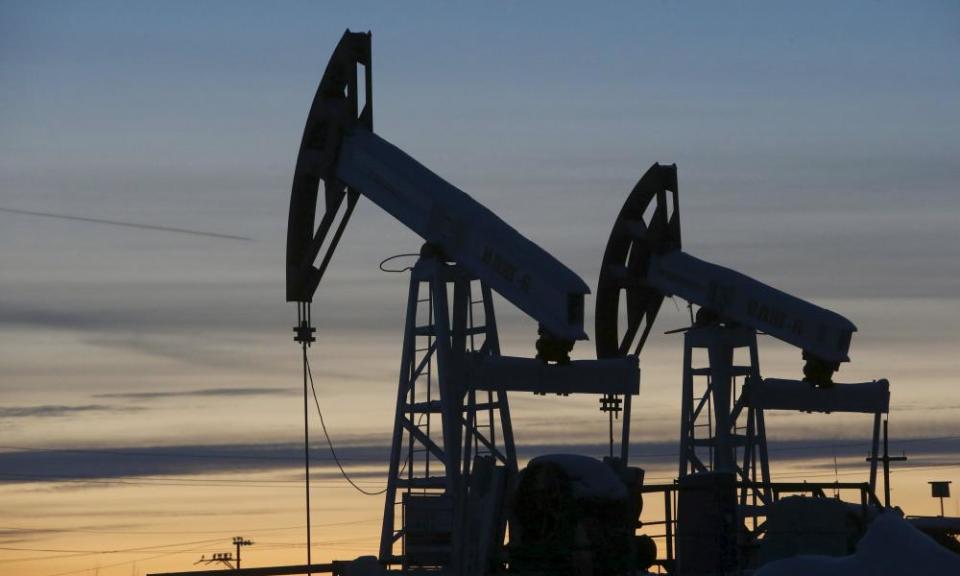Oil price slides as Opec production cuts fail to impress markets

The world’s major oil producers have voted to continue their production cuts into 2018 in an attempt to prop up the oil price.
Under the deal reached by Opec and 11 non-members, including Russia, output cuts of 1.8m barrels a day will be extended for a further nine months.
However, the deal failed to impress the market and the oil price started to slide even as the details of the agreement were being hammered out.
The price of Brent Crude fell almost 4% to $51.90. It has mostly hovered in the $50-55 range since the original six-month cuts began in January.
While the result was expected, it quashed hopes in some quarters that the Vienna meeting would yield even deeper cuts, which the cartel deemed unnecessary.
Neil Wilson of ETX Capital said: “Opec members had a chance today but bottled it. A nine-month extension just isn’t enough to really lift oil prices as we’ll continue to see US shale fill the gap. Having said they’d do whatever it takes, Opec is looking a bit toothless now.”
Saudi Arabia said the group could have dealt with the oil supply glut by the end of 2017, but was playing it safe.
“We would do it in six months but then we’d have a seasonal build [of supply] in the first quarter [of 2018] which could undo what we’ve done – so we went for the safe bet of extending to nine months,” said Khalid al-Falih, the Saudi energy minister.
Delegates at the meeting described Russia as a “lynchpin” in winning non-Opec members over.
While the agreement has only stabilised the oil price in the short-term, experts hailed it as an important deal.
“Opec’s decision is a big one because it shows a commitment to support oil prices into 2018 – and potentially for all of next year,” said Ann-Louise Hittle of Wood Mackenzie. The oil analysis group said that without an extension, prices would have collapsed next year to an annual average of $43 a barrel.
Maintaining the cuts would likely set a floor price in the low $50s this year, said Deloitte, which believes the cartel made the right decision in extending rather than deepening curbs.
“Deeper cuts would have likely weakened the incentive for high compliance across Opec while encouraging non-Opec producers to accelerate production growth,” said Andrew Slaughter of the Deloitte Center for Energy Solutions.
Saudi Arabia rejected the claim that the group’s efforts to stabilise the oil price would be hampered by US oil production rising off the back of the Opec deal. “Shale is an important variable but we don’t believe it’s going to significantly derail or affect what we’re doing. The market is big enough to absorb the expected increased production in shale in 2017,” said Falih.
However, observers said that Opec’s ability to shore up prices by curtailing output was constrained by the speed and volume with which US oil production could ramp up.
Jason Bordoff, founding Director at the Center on Global Energy Policy at Columbia University, said: “To the extent Opec cuts production and props up prices, some of those gains are lost to more rapid growth in shale oil, which is very sensitive to changes in price at the levels we are currently seeing.”
Some Opec delegates said they did not believe forecasts by the US government, which expect US production up 1m barrels a day year-on-year by December – a level that would offset more than half the cuts of the “Vienna group”.
But Bordoff said the forecast did not seem unreasonable. “Recent experience with shale suggests that Opec countries should underestimate shale at their peril,” he warned.
The original Opec deal last year has already spurred the US oil industry to return rigs to work at a ferocious rate. Baker Hughes puts the number of rigs at 901 now, up from 404 at the same time last year – and the production from many of those rigs has yet to come through.
At the Vienna meeting Opec also accepted Equatorial Guinea as its 14th member.

 Yahoo Finance
Yahoo Finance